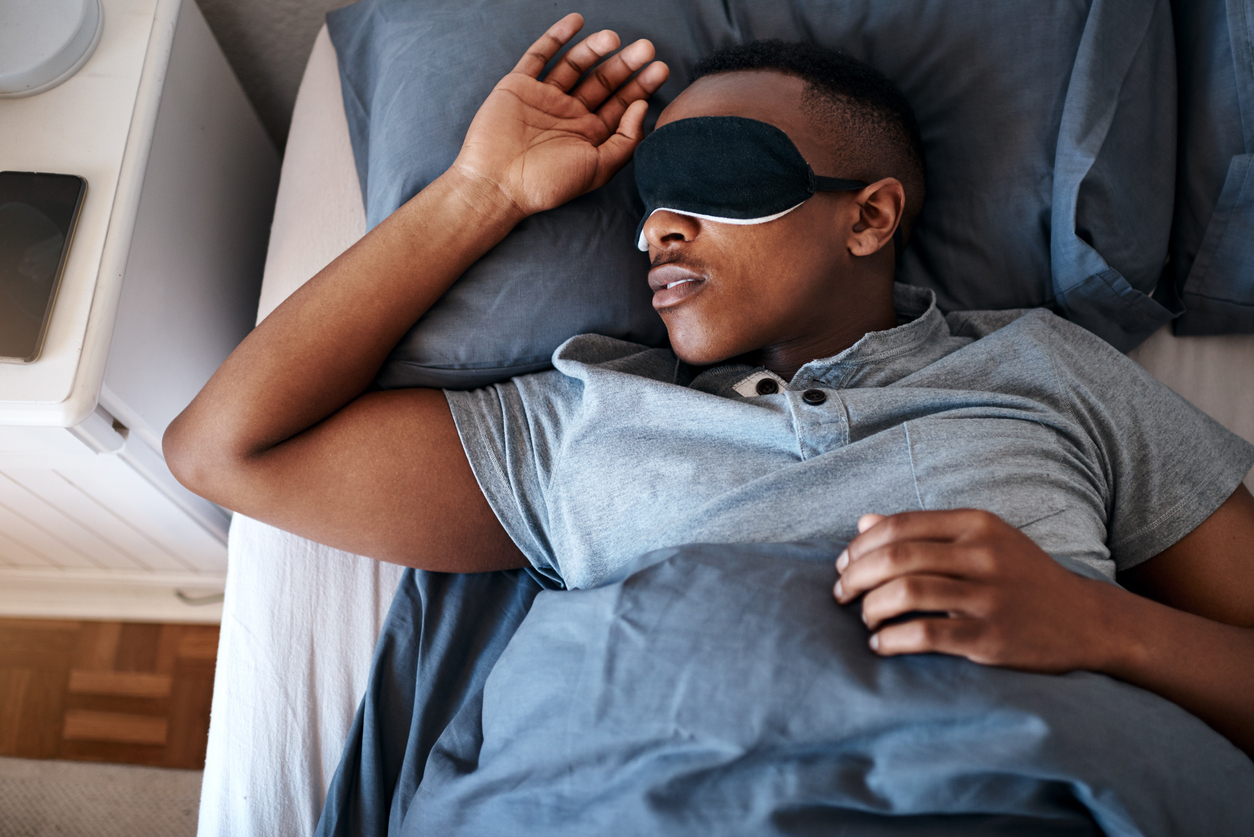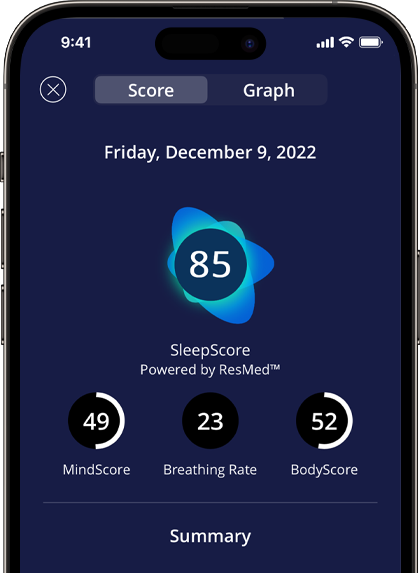What is Sleep Paralysis (Signs, Causes, & Prevention)

Imagine this nightmare: just after waking up, you are alert and conscious yet unable to move a muscle. You feel an inexplicable pressure and heaviness on your chest, and you sense an ominous presence in your bedroom. Fully aware of your own paralysis, you continue to try to scream and move – but you can’t. This must be a dream, right? Not quite. After several minutes, the symptoms let up and you either fall back asleep or begin to move again. What just happened? This loss of muscle control that occurs immediately after falling asleep or waking up is known as sleep paralysis. For many, episodes of sleep paralysis are usually benign, but they can lead to stress and anxiety.
In this article, we’ll unravel exactly what happens in the brain of someone experiencing sleep paralysis, provide information on who is at risk of sleep paralysis, and explore tips to limit episodes. Although symptoms of sleep paralysis sound like something out of a horror or sci-fi flick, we’ll break down the science and evidenced-based explanations for this enigmatic sleep condition.
What Is Sleep Paralysis?
Sleep paralysis is a relatively common sleep condition that is characterized by a temporary and usually brief loss of muscle control – known as muscle atonia – immediately after waking or falling asleep. Although estimates vary, researchers suggest that approximately 8% of the general population and over 30% of psychiatric patients will experience episodes of sleep paralysis during their lifetime. In addition to muscle atonia, approximately 75% of sleep paralysis episodes are accompanied by bizarre and often terrifying visual hallucinations. There are usually three categories of hallucinations reported in sleep paralysis episodes:
- Intruder hallucinations: seeing and sensing threatening entities (often “demons” or spirits) with vivid hallucinations of an intruder in the bedroom.
- Incubus hallucinations: a sense of severe pressure on the chest accompanied by an inability to breathe due to choked or suffocated.
- Vestibular motor hallucinations: illusory feelings of movement including out-of-body feelings such as flying or hovering over your own body.
Unlike dreams, hallucinations during sleep paralysis occur in a parallel conscious state between waking and sleeping. These hallucinations, coupled with muscle atonia, have been shown to cause major fear in up to 90% of people. About 1 in 10 people who experience sleep paralysis will report clinically significant levels of stress that interfere with their quality of life.
Could sleep paralysis actually be pleasant? Fascinatingly, there is some research suggesting that pleasant experiences may be common (in up to 23%) in people who have recurrent sleep paralysis. The authors of this study found that higher levels of trait openness to new experiences increased the likelihood of pleasant sleep paralysis episodes. In addition to personality traits, the perception of sleep paralysis episodes may also depend on social and ethnic constructs, and local beliefs and traditions.
Types of Sleep Paralysis
Sleep paralysis is generally classified by its recurrence/frequency and co-occurrence with narcolepsy, an extremely rare but debilitating neurological sleep disorder that causes an inability to regulate sleep-wake cycles:
- Isolated sleep paralysis: isolated episodes unrelated to any sleep disorder or medical problem for sleep paralysis
- Recurrent sleep paralysis: multiple and recurring episodes, often in the context of narcolepsy.
- Recurrent isolated sleep paralysis (RISP): multiple episodes over time that are unrelated to any sleep disorder or medical problem that may cause excessive daytime sleepiness due to fear of sleeping. Note: RISP is extremely rare, occurring in less than 0.5% of healthy people.
Causes of Sleep Paralysis
Although the exact mechanisms driving sleep paralysis are still not entirely known, sleep scientists believe it is caused by an abnormal mixed state of wake and rapid eye movement (REM) sleep. REM sleep stage is where you spend most of your sleep time vividly dreaming. Throughout REM sleep, the brain intentionally blocks any form of movement (known as muscle atonia) in order to prevent dangerous movements – thereby ensuring we don’t act out our dreams.
Sleep paralysis is therefore believed to be caused by a continuation of REM-induced muscle atonia into our waking state. It is for these reasons that sleep paralysis is often accompanied by dream-like hallucinations. During sleep paralysis, we are both consciously awake yet still locked in dream sleep.
Studies on sleep paralysis have also identified potential risk factors and “triggers” for episodes including:
- Shift work and daytime sleeping
- Obstructive sleep apnea
- Nighttime leg cramps
- Anxiety
- Depression
- Post-traumatic stress disorder
- Bipolar disorder
- Panic disorders
How to Stop Sleep Paralysis from Happening
It’s important to remember that, for most people, sleep paralysis is generally not considered a serious medical problem. Sleep paralysis episodes are usually isolated and classified as a benign condition that doesn’t happen frequently enough to interfere with quality of life. However, if you experience recurrent and bothersome symptoms of sleep paralysis it may be a good idea to talk with your doctor in order to rule out other sleep disorders like narcolepsy.
Overall, there is limited evidenced-based treatment options for sleep paralysis. Psychological and behavior interventions such as cognitive behavior therapy for sleep paralysis have been proposed, but further testing is needed to assess their efficacy for preventing episodes and reducing their severity. In general, doing your best to maintain optimal sleep hygiene may help limit the likelihood of experiencing sleep paralysis. Since episodes of sleep paralysis may be triggered by overnight awakenings during REM, techniques to improve sleep consistency and continuity may help.
Sleep hygiene tips and tricks include:
- Consistency is key: stick to a sleep schedule (even on weekends).
- Keep active at the right time: exercise daily, but any strenuous exercise should take place no later than 3 hours before bedtime.
- Cut the stimulants: avoid caffeine and nicotine after 2PM..
- …And the alcohol: avoid alcoholic drinks before bed.
- Stay out: only use the bedroom for sleep and intimacy.
- Watch what you eat: avoid large meals and beverages late at night.
- Think dark or dim: limit use of bright lights in the 3 hours before bedtime.
- Daytime light: daylight helps regulate the circadian rhythm; step outside into natural sunlight in the morning for at least 15-30 minutes.
- Nap times: naps may help give a quick refresh, but avoid them after 3PM.
- Relax with a ritual: unwind before bed with a hot bath and create a ritual like reading or listening to relaxing music before bed.
- Create a sleep sanctuary: ensure your bedroom is comfortable, dark, cool, and quiet.
SleepScore Labs Solutions
Download the free SleepScore App for insights and articles on how well you sleep, the quality and quantity of your sleep cycles, and sleep improvement progress with science-backed tips and insights. Download it for free from App Store and Google Play Store!
You can also visit the SleepScore Store for a wide range of sleep-promoting products carefully curated by SleepScore Labs’ team of researchers including white noise machines, lighting solutions, and more to support your sleep-wake schedule!
Sleep well!


